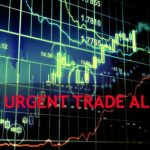Here?s a chart that you don?t see very often, the one for iron ore priced in U.S. dollars. I?m sure that every miner working at BHP?s pits in the Australian outback goes to sleep with a print out of this chart clutched close to his chest. You can?t blame him, as his livelihood depends on it, and it has had a definite southerly tilt for the last two years, losing some 50% from the top.
The reasons are known by all. As Chinese growth downshifts from a torrid 13% annual rate to 7% now and possibly zero next year, the demand for Australia?s largest export has been evaporating like an ice cube in the western deserts. (BHP) has already cancelled one high profile project. There is news of contract defaults with Chinese buyers. Steel plants in the Middle Kingdom are seeing actual shutdowns.
As this is the world?s second largest bilateral trade after America?s oil imports from the Middle East, it offers a valuable window on the health of the global economy. And the patient currently has a bad case of the flu which may develop into a fatal case of pneumonia.
Now contrast this chart with the one for the S&P 500 (SPX), which couldn?t be more different. It has been in an uptrend for the past four years, has doubled off its 2009 low, and is on the verge of drifting up to four-year highs on no volume.
What gives? What we are seeing here is a classic war between the fundamentals and liquidity, and liquidity is winning. You would think that with the rest of the world headed for, or already in, recession, the market would be going to hell in a hand basket. Not so. Ben Bernanke and his central banker friends around the world have orchestrated a crescendo of printing presses that have kept the hopium coming and stock prices rising.
This leads me back to my headline, is ?RISK ON?/?RISK OFF? broken? It would certainly seem so as long as the Federal Reserve is keeping the pedal to the metal. So paper assets, like stocks and bonds, are enjoying their glory days. At the same time, any hard assets, especially those most consumed by China, like copper, iron, ore, sugar, zinc, Caterpillar (CAT) and Freeport McMoRan (FCX), are being beaten like the proverbial red-headed stepchild.
Gold (GLD) is getting a free pass from this punishment, as quantitative easing and the dollar devaluation it assures brings in lots of buyers. Oil (USO) is going up for all the usual geopolitical reasons, including Iran, Syria, Libya, and Hurricane Isaac.
So what?s a trader to do? For a start, it means you have to work harder. Making money is no longer a simple flip of the ?ON?/?OFF? switch. We now have to carefully analyze each asset class, industrial sector, and individual company looking to buy the cheapest ones and sell short the expensive ones against them.
Remember, while people have been bitching about falling volatility and low index returns, Apple (AAPL), my largest position, has soared by 70%. It?s not like this one was hard to find either. If fact, I can see their headquarters from my office window right now, while my iMac, iPad, iPhone 4s, and Airbook are charging.
Of course, there is one way to duck the new, heavy workload, and that is to leave all the heavy lifting to me. Making money in tough conditions like this is something that I thrive on. For the first time, I have sent out more trade alerts than newsletters this month, and the model portfolio has been up almost every day for four months.
Remember, the answer to all questions is to buy my newsletter.






